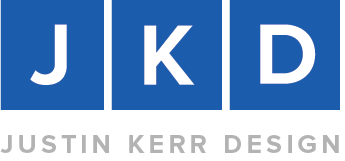How to Give (and Get) Good Feedback
Have you ever heard (or said) any of the following?
“I’m not feeling it.”
“It needs more… pizazz!”
“It’s not what I had in mind.”
“Could you provide three more options? I’ll know it when I see it.”
If you’re a designer, your blood pressure may be slightly elevated at this point.
If you’re a client, you might be puzzled why your designer doesn’t understand what you want.
Why is giving (and receiving) good feedback so difficult sometimes? The answer can be found at the very beginning of the project — when designer and client first connect.
Getting to know you
For the designer: It’s always a good idea to vet your clients. How did they find you? What’s their role in the company or organization? My contact page has a very short form that includes a few strategic questions that, depending on the answers, could be the difference between scheduling a discovery call with the prospective client or referring them to someone else. If a client doesn’t answer my questions prior, I ask them during our first call.
For the client: Check out your designer. Do they have a portfolio and/or can they send you samples of their work? Do they have testimonials on their website or LinkedIn profile, or do they have Google reviews? Are they willing to provide contact information for previous clients?
Goooaaals!
Every good outcome is preceded by good planning and all good feedback is preceded by establishing project goals.
For the designer: Ask questions like, “What do you want this project to accomplish?” “What do you want your brand to communicate?” “What is your marketing message and who is the audience you’re trying to reach?”
For the client: Be ready to answer the above questions. You might need to do some homework before you sit down with your designer or you can add a discovery phase to the project which will increase the turnaround time and the budget.
Tell me where it hurts. And be honest.
For the designer: Ask your client why they came to you specifically and why they came at this specific time. The answers may reveal some of their pain points like, “I had a bad experience with my previous designer because…” or “I need to design a trade show booth and I only have a month until the event.”
For client: Be honest with your designer about your timetable and any potential challenges related to the project (like multiple decision-makers). It will always be easier to deal with (and plan for) these things before you start rather than in the middle of a project.
Get it in writing
For the designer and the client: Write the project goals down so both of you can review them and agree (or request changes). This may seem like a really obvious tip but I’ve had projects go sideways because a goal was not documented. Writing things down avoids the frustration of hearing, “I thought you said…”
Giving and receiving
For the designer: If a client asks you to change the design and “make it less busy” ask them to clarify. You can provide some prompts like: Is it the number of elements? The colors? Would you like to see more open space? You can also refer back to the project goals if one of the goals was to “provide a lively design that would be attractive to a young audience.” Now you have a starting point to discuss what “busy” means.
For the client: Keep the project goals in mind as you review designs. You may have a gut feeling about a particular design element (and feelings are fine) but ask yourself, “Does this reflect the project goals and will it resonate with my target audience?” Ultimately, your audience is the end client.
There was this one time…
In my time as a professional designer, I’ve encountered clients that were simply impossible to please and I’ve also endured art directors from Hell. Sometimes, no amount of planning and goal setting will help you avoid these kind of unfortunate scenarios but, most of the time, giving (and receiving) good feedback is fairly simple.

